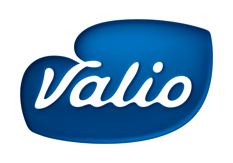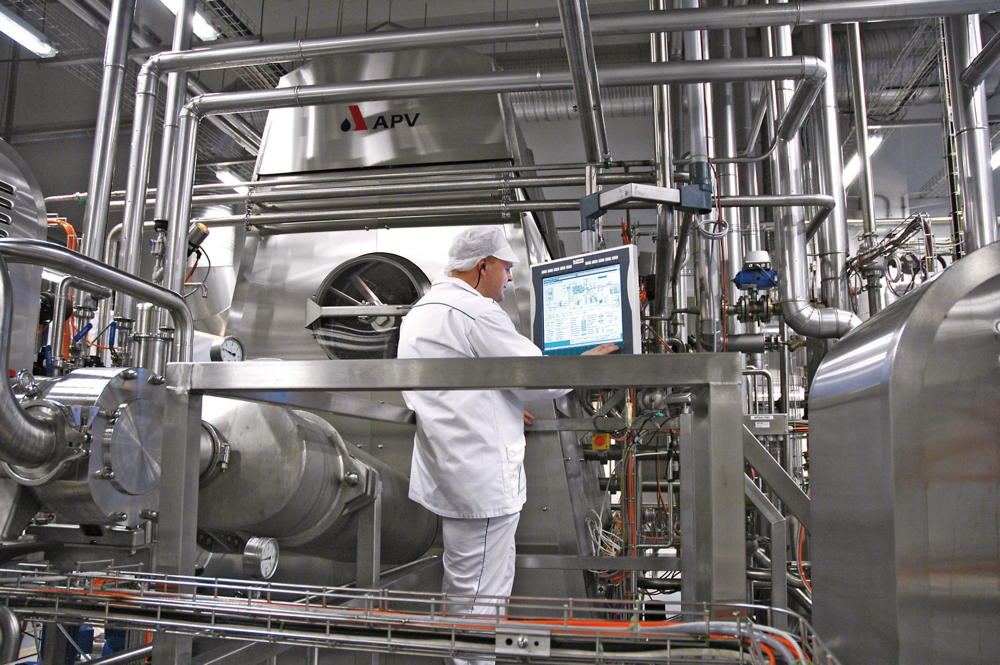
Valio
Integration of Industry 4.0 production systems using OPC UA technology
The goal of Industry 4.0 production systems is to enable intelligent and flexible production while minimizing configuration times on production lines. At Valio, product quality and traceability requirements are at a very high level, highlighting the importance of smooth and reliable communication between different production systems. To meet these requirements, Prosys developed the OPC UA standard based software Valio uses for integrating all their automation and manufacturing execution systems.
Reference Architecture Model for Industry 4.0
Valio is a pioneer in both product and production development and has over 350 patents worldwide. Production is constantly being developed with many vendors, choosing the best solutions for each need. Valio has benefited from OPC UA technology earlier and more than most other companies. The right decisions were confirmed when the internationally followed and applied Reference Architecture Model for Industry 4.0 defined OPC UA technology for use in both data communications and data modeling.
OPC UA also offers high security and the widest support from automation and manufacturing control suppliers, and consequently has been a good choice for unifying the various systems of production in all Valio plants. According to Valio Development Manager Mika Puustinen, Prosys' strengths include OPC UA technology expertise, flexibility and efficient implementation of solutions. “Prosys has long-term experience and good know-how in production software development and OPC UA technology,” says Puustinen about co-operation. “It is also important for us that the partner is reliable and long-term cooperation is possible”.
OPC UA Integration Solution
The integration solution uses the OPC UA standard based communications to connect automation systems to Valio’s manufacturing execution system (MES) and overall equipment effectiveness (OEE) system. In the case of automation systems, they include both large distributed automation systems (DCS) and smaller programmable logic (PLC) systems. In addition, the installation base includes PC-based and embedded solutions for controlling production lines and equipment. For all of these, an OPC UA or OPC classic server was available or was possible to be developed.
The software developed for integration is based on Microsoft .NET technology and has been developed using the Microsoft Visual Studio development tool. The OPC UA interface is primarily connected to the Oracle database of the manufacturing execution system. The MES system also uses a custom HTTP REST / JSON API provided by the OPC UA solution to retrieve data from OPC UA servers.
The OPC UA solution is configured via a NodeJS + Angular technology-based browser interface. For example, new trends can easily be added to data collection or new production messages can be defined. Features also include data validation for special cases and real-time monitoring of OPC UA connections, where a dedicated monitoring user interface facilitates expert work.
The data transferred to the production execution system includes process messages and measurement data. The connection is also used to transfer process orders and recipes from the manufacturing execution system to automation systems. Continuous real-time information on the state of production processes is needed to monitor production efficiency, and for this purpose, measurements are sent through the OPC UA solution to OEE computing and reporting systems.
Using OPC UA technology, all the above-mentioned communication needs can be centrally managed through one reliable and easily configurable connection. Systems that provide OPC classic servers can be accessed using OPC UA Gateway converter software. The solution also improves security as OPC UA enables the use of the latest security methods, such as encryption, while being easily routed in a segmented and hardened plant network. The integration solution is easily expandable to new needs and can manage the data communication needs between plant systems and automation at all Valio production plants in a unified and manufacturer-independent manner.

We want to have a forward-looking and top-notch supplier that understands the needs of the production environment and is able to implement demanding plant system integration. In addition, OPC UA has proven to be a true long-term technology solution with constantly increasing market share in production installations and support by vendors “.
Mika Puustinen
Development Manager, Valio
About Valio
Valio, offering the taste of Nordic nature since 1905, is a brand leader and the biggest dairy business in Finland while being a major player in the international dairy ingredients market. Valio's product range includes around 1,000 products and launches over 100 new products annually. Products include milk, cheese, cream, butter, curd and yoghurts. Valio has production facilities in 12 locations in Finland and exports to over 60 countries. In addition to products sold, exports include raw materials for the food industry: butter for French croissants and milk powders, from which, for example, ice cream, chocolate and baby foods are produced. Valio employs approximately 4,000 professionals in various fields and Valio's innovations have over 350 patents worldwide.
